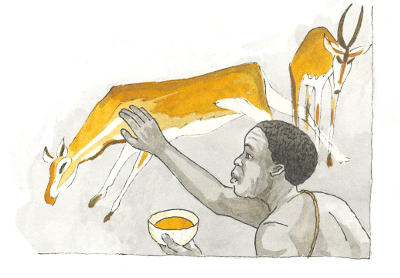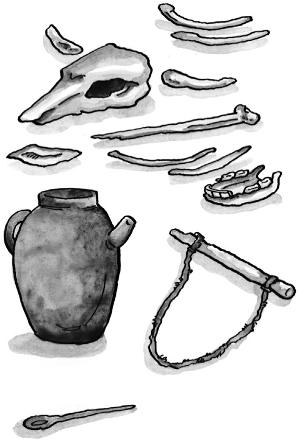Using AI to control energy for indoor agriculture
30 September 2024
Published online 10 October 2016
Technological advancements in the region have created new archaeological opportunities, but cooperation, funding, and a big-picture approach is needed.

In the past decade, new labs and research projects that apply chemical, physical, and environmental knowledge, as well as computer and satellite technologies to archaeological material, have cropped up in the region.
Questions that were completely unanswerable before are being solved, says Anita Quiles, director of the archaeometry lab of the Institut français d’archéologie orientale (IFAO) in Cairo, “opening a new front of investigations to understand the past.”
The recent developments in regional archaeological science is long overdue and are the only way the Middle East can compete with advances that are revolutionizing the field of archaeology in the West.
But, despite its historical richness, the region’s archeological field is still bogged down by challenges. For instance, the long history of exploitation by foreign antiquities dealers, explorers, and archaeologists working in the Middle East led to stringent regulations in many countries that now mostly prohibit the export of any ancient material.
Without strong local facilities and expertize, archaeological research would stagnate. According to Myrto Georgakopoulou, lecturer in archaeological materials science at UCL Qatar, “one of the most important challenges in developing archaeological science research in the region, are focused around accessibility to materials for study, due to sometimes complicated or unclear policies of heritage management that may restrict sampling or export of samples.”
Regional-focused research is required for effective analysis and conservation of local materials. “Each material and ancient technology needs its own method of preservation,” explains Abdelrahman Medhat, conservator at the Grand Egyptian Museum. It is why conservation techniques can’t be universally applied, he adds.
The scientist insists that there is a need for conservation practices specific to the materials and technologies used by ancient societies in the Middle East.
In the past, almost all scientific analysis of archaeological materials from the Middle East was conducted in European and North American labs. Recently, however, with the development of regional archaeological science academic programmes and labs, this dynamic is starting to change.

New Arabian Gulf universities are also bringing archaeological science to the forefront. UCL Qatar’s Archaeological Materials Science Laboratories opened in 2013. It’s a teaching and research lab that offers chemical characterization of inorganic archaeological materials.
Georgakopoulou says there are ongoing projects that analyze ancient metals from the Arabian Peninsula, the Levant, and Sudan, as well as glass and ceramics from the Gulf and Iraqi Kurdistan.
Recent research output shows a great momentum in regional archaeological science, researchers believe. The region is now publishing in the highest impact archaeology journals, such as, Archaeometry and the Journal of Archaeological Science, as well as numerous high-impact journals on medicine, physical anthropology, Earth sciences, as well as chemical and physical sciences.
But with a finite number of facilities and equipment, compounded by lack of funding, poor cooperation between archaeologists, scientists, and extant labs, many types of analyses are not conducted in the region.
The problem is two-fold: There’s a shortage in the specialized archaeological science labs, and limited access to existing physical sciences’ labs. For example, mass spectrometry is used for isotope analysis of human, animal, and plant remains; bringing a revolution in archaeologists’ understanding of ancient environments, health, and diet. This technique is available in many regional physical science labs, yet archaeologists don’t have access to such facilities, which greatly hinders research.
Additionally, there is little connection between archaeologists and scientists, which is crucial for interpreting data. Georgakopoulou explains, “Specialised laboratories and expertise are necessary to bridge the gap between the traditionally distinct fields of archaeology and the physical sciences.”
Moreover, large grants are often ear-marked for more traditional sciences. This makes expensive lab analyses cost prohibitive for archaeologists, which limits research potential.
These problems culminate in a lack of cohesion in the regional archaeological science community, which has far reaching consequences. Archaeologists want to address big picture questions for the region, requiring extensive databases generated by different laboratories and by various techniques. These databases need to be of good quality and comparable with each other, according to Georgakopoulou. Without partnerships between the limited regional labs, there is little comparability for data, making it impossible to address how phenomena have affected the region as a whole.
doi:10.1038/nmiddleeast.2016.184
Stay connected: